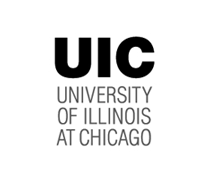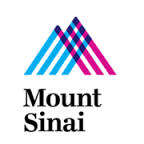Randomized Trial of Pegylated Interferon Alfa-2a Versus Hydroxyurea in Polycythemia Vera (PV) and Essential Thrombocythemia (ET)
| Status: | Completed |
|---|---|
| Conditions: | Blood Cancer, Hematology |
| Therapuetic Areas: | Hematology, Oncology |
| Healthy: | No |
| Age Range: | 18 - Any |
| Updated: | 7/26/2018 |
| Start Date: | September 2011 |
| End Date: | June 30, 2017 |
Randomized Trial of Pegylated Interferon Alfa-2a Versus Hydroxyurea Therapy in the Treatment of High Risk Polycythemia Vera (PV) and High Risk Essential Thrombocythemia (ET)
This research is looking at two conditions, Essential Thrombocythemia (ET) and Polycythemia
Vera (PV). ET causes people to produce too many blood cells called platelets and PV causes
too many platelets and red blood cells to be made. Platelets are particles which circulate in
the blood stream and normally prevent bleeding and bruising. Having too many platelets in the
blood increases the risk of developing blood clots, which can result in life threatening
events like heart attacks and strokes. When the number of red blood cells is increased in PV
this will slow the speed of blood flow in the body and increases the risk of developing blood
clots.
The purpose of this study is to look at the effectiveness of giving participants who have
been diagnosed with ET or PV one of two different study regimens over time. The study subject
will be followed for their condition for about 5 years. The subject will be randomized into
one of two study regimens, either Pegylated Interferon Alfa-2a (PEGASYS) or Aspirin and
Hydroxyurea (also called Hydroxycarbamide). The subject must be newly diagnosed or already
receiving treatment for either PV or ET. Each of the study drugs used in this study is
already being used to treat subjects with ET or PV currently, but the investigators are
unsure which study drug is better.
Vera (PV). ET causes people to produce too many blood cells called platelets and PV causes
too many platelets and red blood cells to be made. Platelets are particles which circulate in
the blood stream and normally prevent bleeding and bruising. Having too many platelets in the
blood increases the risk of developing blood clots, which can result in life threatening
events like heart attacks and strokes. When the number of red blood cells is increased in PV
this will slow the speed of blood flow in the body and increases the risk of developing blood
clots.
The purpose of this study is to look at the effectiveness of giving participants who have
been diagnosed with ET or PV one of two different study regimens over time. The study subject
will be followed for their condition for about 5 years. The subject will be randomized into
one of two study regimens, either Pegylated Interferon Alfa-2a (PEGASYS) or Aspirin and
Hydroxyurea (also called Hydroxycarbamide). The subject must be newly diagnosed or already
receiving treatment for either PV or ET. Each of the study drugs used in this study is
already being used to treat subjects with ET or PV currently, but the investigators are
unsure which study drug is better.
The Philadelphia chromosome negative myeloproliferative neoplasms (MPN) are a group of clonal
hematological malignancies that are characterized by a chronic course which can be punctuated
by a number of disease related events including thrombosis, hemorrhage, pruritis and leukemic
transformation. These disorders include Polycythemia Vera (PV), Essential Thrombocythemia
(ET) and Primary Myelofibrosis (PM). Recently an acquired somatic mutation in the
intracellular kinase, JAK2 (JAK2V617F) has been observed in 95% of patients with PV, 50% of
patients with ET and 50% of patients with primary myelofibrosis. At present the
chemotherapeutic agent hydroxyurea is the standard of care for high risk patients with PV.
Concern exists about prolonged use of this drug leading to leukemia and the inability of
hydroxyurea to eliminate the malignant clone.
Interferon (rIFN -2b), is a drug that appears to be non-leukemogenic, and may have a
preferential activity on the malignant clone in PV, as suggested by cytogenetic remissions
obtained in patients treated with rIFN -2b. Several investigators recently reported that
patients with PV treated with rIFN -2b had lower JAK2V617F allele burdens as compared to a
control group that included patients treated with phlebotomy, hydroxyurea, or anagrelide, or
who remained untreated. The results confirm the hypothesis that rIFN -2b preferentially
targets the malignant clone in PV and raises the possibility that the JAK2V617F allele
burden, and a reversion of clonal hematopoiesis monitored in females by expression of
X-chromosome polymorphic alleles maybe useful in monitoring minimal residual disease in PV
patients.
Pegylated Interferon Alfa-2a (PEGASYS) has been demonstrated in phase II trials of patients
with PV and ET to have clinical efficacy as measured by normalization of myeloproliferation,
lack of vascular events while on therapy, and a decrease in the JAK2V617F allele burden.
Overall the tolerability of the therapy was good, with each of these trials having a dropout
rate secondary to toxicity of less than 10% of those enrolled. Although dropout rates for
toxicity were low, that is not to say the therapy was without symptomatic toxicity, and
indeed a spectrum of toxicities might be encountered and need to be weighed in the analysis
of the net clinical benefit patients experience on a clinical trial with Pegylated Interferon
Alfa-2a.
A new MPN assessment form will be utilized in this study. This 19 item instrument includes a
previously validated 9 item brief fatigue inventory (BFI), symptoms related to splenomegaly,
inactivity, cough, night sweats, pruritus, bone pains, fevers, weight loss, and an overall
quality of life assessment. The instrument yields an independent result for each symptom
(fatigue is a composite score), as this methodology (of linear analog scale assessment
[LASA]) has proven very valid in the past. This instrument was validated prospectively (by
comparison to a panel of instruments each containing an aspect of the MPN-SAF) for
administration at a single time point.
This is a randomized trial between hydroxyurea and Pegylated Interferon Alfa-2a, it is an
open label clinical trial in two independent disease strata: (1) high risk polycythemia vera
and (2) high risk essential thrombocythemia.
hematological malignancies that are characterized by a chronic course which can be punctuated
by a number of disease related events including thrombosis, hemorrhage, pruritis and leukemic
transformation. These disorders include Polycythemia Vera (PV), Essential Thrombocythemia
(ET) and Primary Myelofibrosis (PM). Recently an acquired somatic mutation in the
intracellular kinase, JAK2 (JAK2V617F) has been observed in 95% of patients with PV, 50% of
patients with ET and 50% of patients with primary myelofibrosis. At present the
chemotherapeutic agent hydroxyurea is the standard of care for high risk patients with PV.
Concern exists about prolonged use of this drug leading to leukemia and the inability of
hydroxyurea to eliminate the malignant clone.
Interferon (rIFN -2b), is a drug that appears to be non-leukemogenic, and may have a
preferential activity on the malignant clone in PV, as suggested by cytogenetic remissions
obtained in patients treated with rIFN -2b. Several investigators recently reported that
patients with PV treated with rIFN -2b had lower JAK2V617F allele burdens as compared to a
control group that included patients treated with phlebotomy, hydroxyurea, or anagrelide, or
who remained untreated. The results confirm the hypothesis that rIFN -2b preferentially
targets the malignant clone in PV and raises the possibility that the JAK2V617F allele
burden, and a reversion of clonal hematopoiesis monitored in females by expression of
X-chromosome polymorphic alleles maybe useful in monitoring minimal residual disease in PV
patients.
Pegylated Interferon Alfa-2a (PEGASYS) has been demonstrated in phase II trials of patients
with PV and ET to have clinical efficacy as measured by normalization of myeloproliferation,
lack of vascular events while on therapy, and a decrease in the JAK2V617F allele burden.
Overall the tolerability of the therapy was good, with each of these trials having a dropout
rate secondary to toxicity of less than 10% of those enrolled. Although dropout rates for
toxicity were low, that is not to say the therapy was without symptomatic toxicity, and
indeed a spectrum of toxicities might be encountered and need to be weighed in the analysis
of the net clinical benefit patients experience on a clinical trial with Pegylated Interferon
Alfa-2a.
A new MPN assessment form will be utilized in this study. This 19 item instrument includes a
previously validated 9 item brief fatigue inventory (BFI), symptoms related to splenomegaly,
inactivity, cough, night sweats, pruritus, bone pains, fevers, weight loss, and an overall
quality of life assessment. The instrument yields an independent result for each symptom
(fatigue is a composite score), as this methodology (of linear analog scale assessment
[LASA]) has proven very valid in the past. This instrument was validated prospectively (by
comparison to a panel of instruments each containing an aspect of the MPN-SAF) for
administration at a single time point.
This is a randomized trial between hydroxyurea and Pegylated Interferon Alfa-2a, it is an
open label clinical trial in two independent disease strata: (1) high risk polycythemia vera
and (2) high risk essential thrombocythemia.
Inclusion Criteria:
- A diagnosis of Essential Thrombocythemia (ET) or Polycythemia Vera (PV) shall be made
in accordance with the WHO (2008)criteria (Swerdlow 2008) as shown below.
- Diagnosis < 5 years prior to entry.
- Polycythemia Vera (2 major criteria required)
1. Hb >18.5g/dl (♂) or 16.5g/dl (♀) or HCT >99 percentile reference range or
Elevated red cell mass (>25% above mean predicted value) or Hb >17g/dl (♂) or
15g/dl (♀) if associated with a sustained rise from baseline with no apparent
cause (e.g. treated iron deficiency).
2. Presence of JAK2V617F
- If source documentation of diagnostic criterion #1 cannot be obtained, then
diagnosis can be made with (1) the addition of an erythropoietin level below
the reference range of normal AND (2) bone marrow biopsy showing
hypercellularity for age with trilineage (panmyelosis) with prominent
erythroid, granulocytic, and megakaryocytic proliferation.
- Essential Thrombocythemia (all 6 criteria required)
1. Platelets count ≥ 450 x 10 to 9/L
2. Megakaryocyte proliferation with large and mature morphology. No significant
increase or left shift of neutrophil granulopoiesis or erythropoiesis. Patients
may have up to and including 2+ marrow reticulin fibrosis (0, 1 or 2 on scale 0
-4).
3. Not meeting WHO criteria for CML, PV, MDS, PMF or other myeloid neoplasm
4. Demonstration of clonal cytogenetic marker or no evidence of reactive
thrombocytosis.
5. Absence of a leukoerythroblastic blood picture.
6. May participate in study without presence of JAK2V617F.
Patients must have high risk disease as defined below:
High risk PV ANY ONE of the following:
- Age ≥ 60 years
- Previous documented thrombosis, erythromelalgia or migraine (severe,
recurrent, requiring medications, and felt to be secondary to the MPN)
either after diagnosis or within 10 years before diagnosis and considered to
be disease related
- Significant splenomegaly (> 5cm below the left costal margin on palpitation)
or symptomatic splenomegaly (splenic infarcts or requiring analgesia)
- Platelets ≥ 1000 x 10 to 9/L
- Diabetes or hypertension requiring pharmacological therapy for > 6 months
High risk ET ANY ONE of the following:
- Age ≥ 60 years
- Platelet count ≥ 1500 x 10 to 9/L
- Previous documented thrombosis, erythromelalgia or migraine headaches
(severe, recurrent, requiring medications, and felt to be secondary to the
MPN) either after diagnosis or within 10 years before diagnosis and
considered to be disease related
- Previous hemorrhage related to ET
- Diabetes or hypertension requiring pharmacological therapy for > 6 months
Other Inclusion criteria (Both Strata)
- Diagnosed less than 5 years prior to entry on trial
- Never treated with cytoreductive drugs except hydroxyurea for up to 3 months
maximum (phlebotomy, aspirin allowed, anagrelide allowed)
- Age: ≥ 18 years (no upper limit)
- Ability and willingness to comply with all study requirements
- Signed informed consent to participate in this study.
- Willing to participate in associated correlative science biomarker study
- Serum creatinine ≤ 1.5 x upper limit of normal
- ST and ALT ≤ 2 x upper limit of normal
- No known PNH (paroxysmal nocturnal hemoglobinuria) clone
- No concurrent hormonal oral contraceptive use
Exclusion Criteria:
(ANY of the following, both strata)
- Known to meet the criteria for primary myelofibrosis (as opposed to ET) by
WHO 2008
- Patients with a prior malignancy within the last 5 years (except for basal
or squamous cell carcinoma, or in situ cancer of the cervix)
- Any contraindications to pegylated interferon or hydroxyurea
- Presence of any life-threatening co-morbidity
- History of active substance or alcohol abuse within the last year
- Subjects who are pregnant, lactating or of reproductive potential and not
practicing an effective means of contraception
- History of psychiatric disorder (e.g. depression) Subjects with a history of
mild depression may be considered for entry into this study, provided that a
pretreatment assessment of the subject's affective status supports that the
subject is clinically stable based on the investigator's normal practice for
such subject.
- History of autoimmune disorder (e.g. hepatitis)
- Hypersensitivity to interferon alfa
- Hepatitis B or C infection (HBV), or untreated systemic infection
- Known HIV disease
- Evidence of severe retinopathy (e.g. CMV retinitis, macular degeneration) or
clinically relevant ophthalmological disorder (e.g. due to diabetes mellitus
or hypertension)
- History or other evidence of decompensated liver disease
- History or other evidence of chronic pulmonary disease associated with
functional limitation
- Thyroid dysfunction not adequately controlled
- Neutrophil count <1.5 x 10 to 9/L
- JAK2 exon 12 mutation: PV that lacks the JAK2V617F mutation but is
characterized by the exon 12 mutation.
- Meets criteria for post PV or post ET-MF
- Subjects with any other medical condition, which in the opinion of the
investigator would compromise the results of the study by deleterious
effects of treatment.
- Previous exposure to any formulation of pegylated interferon
- History of major organ transplantation
- History of uncontrolled severe seizure disorder
- Inability to give informed written consent
- Total bilirubin >1.5 x ULN (patients that have an isolated indirect
bilirubin that causes total bilirubin to be elevated beyond 1.5 x ULN due to
documented Gilbert's syndrome or hemolysis may be included). No detectable
PNH (paroxysmal nocturnal hemoglobinuria) clone where tested
We found this trial at
17
sites
Click here to add this to my saved trials
University of Utah Research is a major component in the life of the U benefiting...
Click here to add this to my saved trials
Stanford University School of Medicine Vast in both its physical scale and its impact on...
Click here to add this to my saved trials
Click here to add this to my saved trials
Click here to add this to my saved trials
University of Illinois at Chicago A major research university in the heart of one of...
Click here to add this to my saved trials
Click here to add this to my saved trials
Duke Univ Med Ctr As a world-class academic and health care system, Duke Medicine strives...
Click here to add this to my saved trials
1441 Eastlake Ave
Los Angeles, California 90033
Los Angeles, California 90033
(323) 865-3000

U.S.C./Norris Comprehensive Cancer Center The USC Norris Comprehensive Cancer Center, located in Los Angeles, is...
Click here to add this to my saved trials
Click here to add this to my saved trials
Icahn School of Medicine at Mount Sinai Icahn School of Medicine at Mount Sinai is...
Click here to add this to my saved trials
Memorial Sloan Kettering Cancer Center Memorial Sloan Kettering Cancer Center — the world's oldest and...
Click here to add this to my saved trials
Click here to add this to my saved trials
3800 Reservoir Rd NW
Washington, District of Columbia 20007
Washington, District of Columbia 20007
(202) 687-7695

Georgetown University Medical Center Georgetown University Medical Center is committed to excellence in research, education...
Click here to add this to my saved trials
Click here to add this to my saved trials
1 Medical Center Blvd
Winston-Salem, North Carolina 27103
Winston-Salem, North Carolina 27103
(336) 716-2011

Wake Forest University Baptist Medical Center Welcome to Wake Forest Baptist Medical Center, a fully...
Click here to add this to my saved trials





